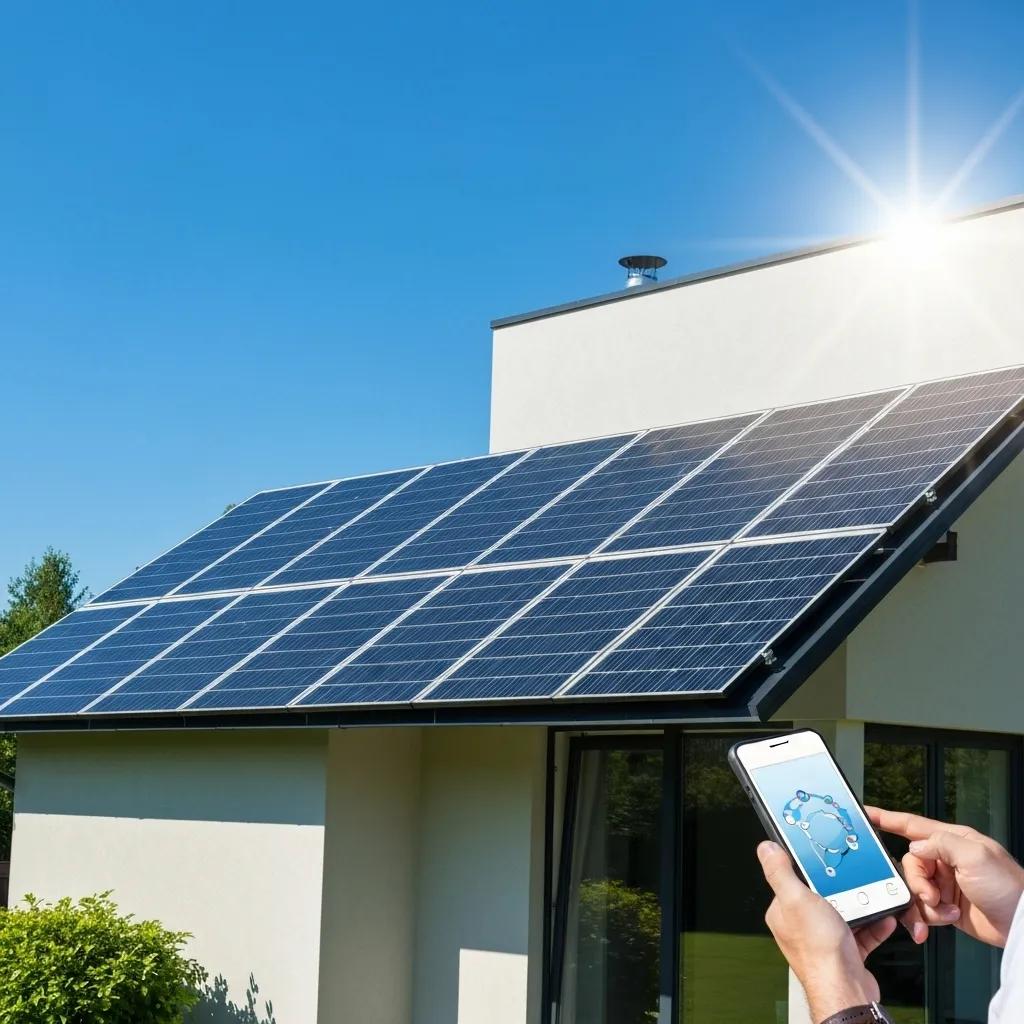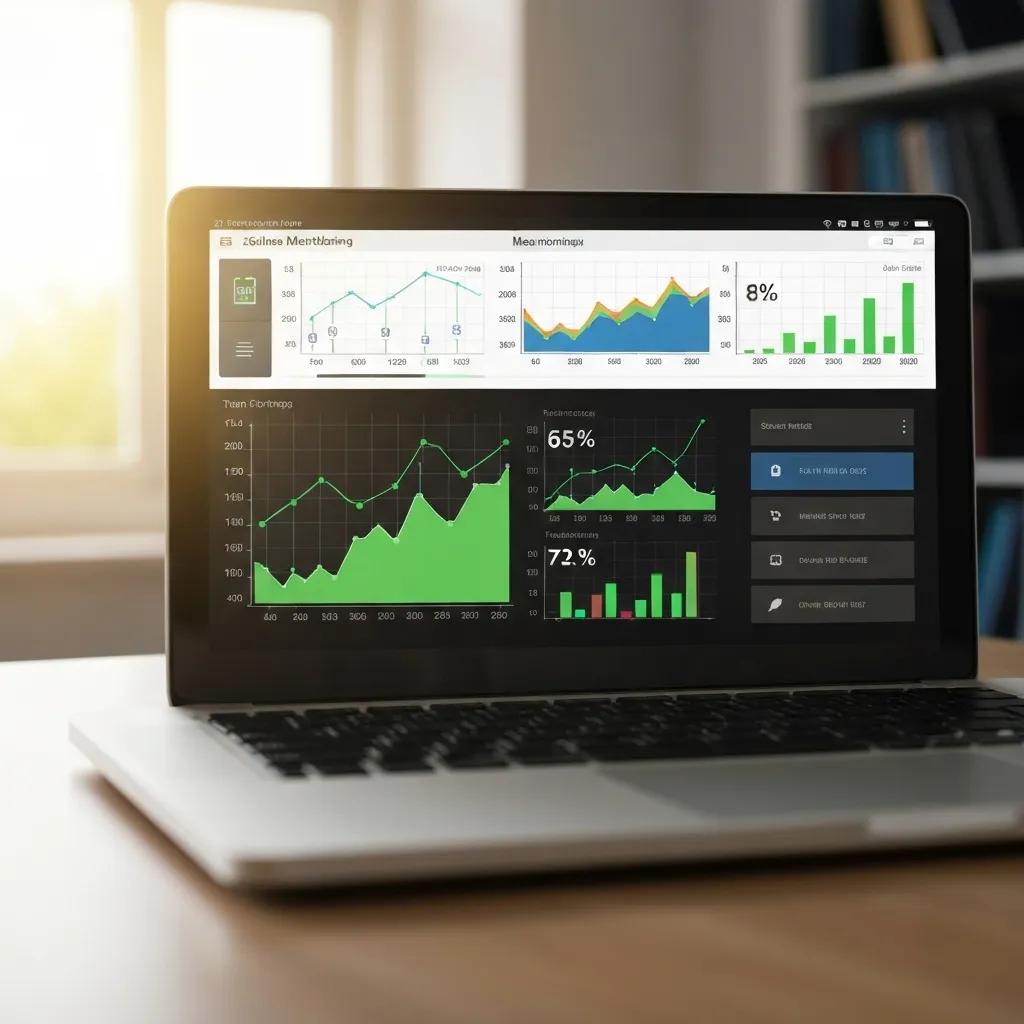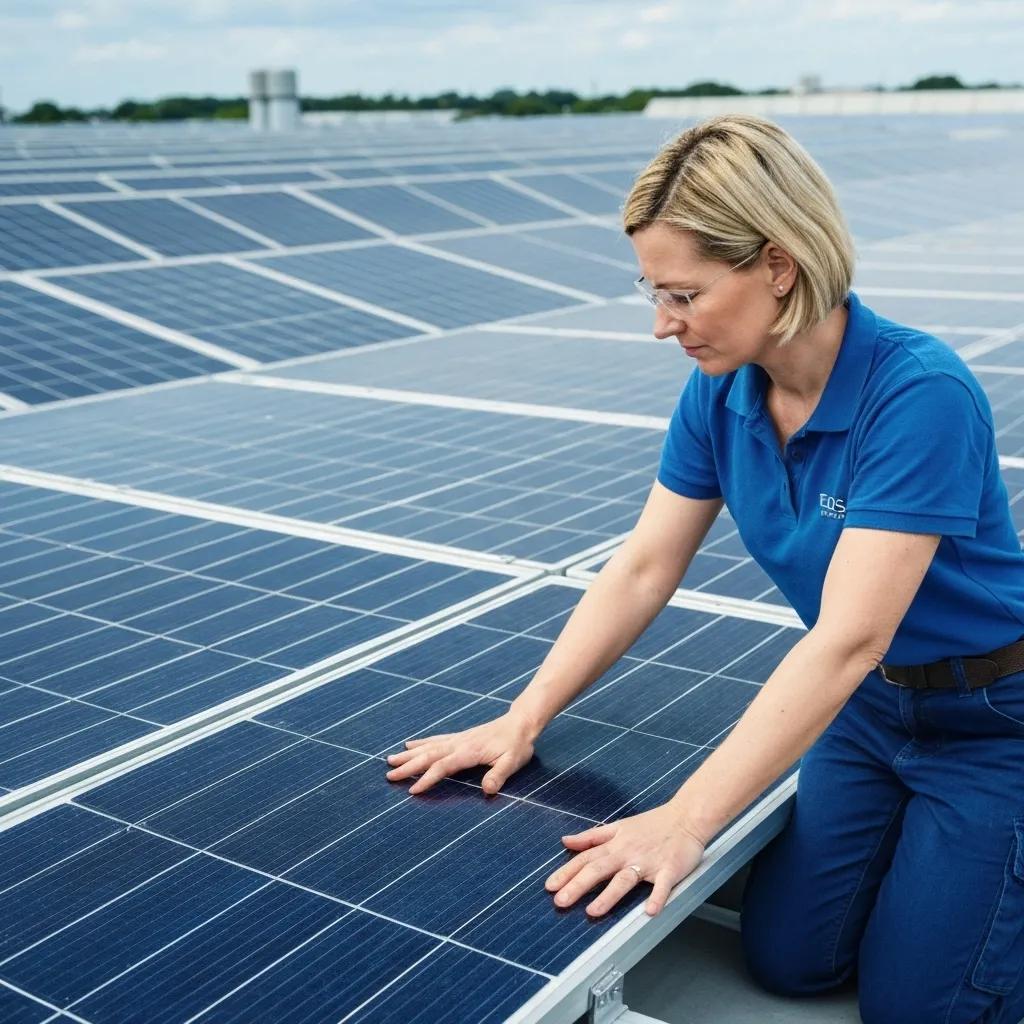
Unlock Your Solar‘s Potential: Real-Time Performance Monitoring Explained
Keep a constant eye on your solar setup with real-time performance monitoring. It captures live data on how much power you’re generating and how your equipment is doing, so you can fine-tune your energy output and catch any issues early. This smart approach uses inverters, data loggers, and cloud-based dashboards to turn raw electricity numbers into clear, actionable insights. For homeowners and businesses in Las Vegas and across Nevada, this means lower costs and a better return on your solar investment. In this guide, we’ll dive into what real-time monitoring is and how it works, show you how to track your energy production, explore the advantages of analytics software, explain predictive maintenance, touch on Nevada’s unique incentives and climate, and compare options for homes versus businesses. Plus, we’ll highlight how Vegas Solar LLC offers free consultations, financing, and local know-how to make it all happen.
This study dives into the advantages of real-time monitoring systems for solar panel performance, highlighting how they help detect faults early and boost energy output. The research underscores the value of continuous data analysis for maximizing the return on investment from solar energy systems.
Smith, A., Solar Energy Systems: Monitoring and Optimization,
This research backs up our focus on how real-time monitoring is a game-changer for boosting solar system efficiency and spotting potential problems.
What Exactly Is Real-Time Solar Panel System Monitoring?
Real-time solar panel system monitoring is all about continuously gathering and analyzing live data from your solar panels and inverters. This lets you check your energy production, system efficiency, and equipment health on the fly. By using sensors and cloud-connected software, this system converts your DC generation figures into AC performance numbers, giving you instant alerts for anything unusual and clear trend visuals that help you stay ahead of maintenance. For instance, you can see production dips happening minute-by-minute, which might signal shading or dirt on your panels, ensuring you’re always getting the most out of your system and keeping your warranties intact.
How Does Real-Time Solar Monitoring Actually Work?

Real-time solar monitoring works by collecting voltage and current data from each inverter or group of panels. This information is then sent wirelessly, either through cellular or Wi-Fi, to an online platform where it’s displayed on easy-to-understand dashboards. The system uses built-in sensors to measure the DC power your panels produce, how efficiently the inverter converts it to AC power, and even panel-level performance if your setup supports it. The big win here is a smooth, automatic flow of data that points out any components that aren’t pulling their weight, preventing energy from being lost unnecessarily.
What Parts Make Up a Solar Performance Monitoring System?
A solid monitoring setup typically includes three main parts:
- Solar panels: These are the workhorses that generate DC electricity.
- Inverters: They convert DC to AC power and keep track of production stats as they do it.
- Data loggers and routers: These devices send your real-time readings to an online portal.
All these pieces work together to make sure every bit of energy you produce is accounted for and analyzed, setting the stage for the energy management and analytics insights we’ll cover next.
Why Is Keeping an Eye on Things in Real Time So Crucial for Solar System Efficiency?
Real-time monitoring is a must-have because it helps you catch performance issues—like panels degrading, inverter problems, or shading—right when they start. This means less downtime and more consistent energy production. Constant oversight helps your system run at its best, ensuring every dollar you’ve invested in solar delivers the maximum possible savings. Having these immediate insights guides smarter maintenance choices, and we’ll connect this to practical tracking methods in the next section.
How Can You Keep Tabs on Your Solar Energy Production in Real Time?
Effective real-time tracking uses user-friendly dashboards and mobile apps that show your generation data in hourly, daily, and monthly totals. This lets you easily compare what you’re actually producing against what you expect. This approach calculates key production figures and flags any differences, turning raw kilowatt-hours into clear reports that help with budgeting and estimating your return on investment.
What Key Numbers Does Real-Time Solar Production Tracking Give You?
Before we list them, remember that each of these metrics offers a clear view into your system‘s performance and its financial impact.
- Instantaneous Power (kW) – This is the AC power your system is outputting right now, measured every few seconds.
- Energy Produced (kWh) – This is the total energy generated over specific periods, like a day or month.
- Peak Output (kW) – The highest power your system reached during the day.
- Performance Ratio (%) – This compares your actual output to the theoretical maximum your system could produce.
Overall, these numbers reveal trends in your production and how efficient your system is, helping you decide when to clean your panels or if you need system upgrades.
These figures are your guide for making smart decisions about cleaning, panel angles, and system size, as we look at data collection next.
How Do Inverters and Data Loggers Help Provide Accurate Solar Production Data?
Inverters that come with built-in data loggers record the voltage and current coming from your panels. They also calculate how efficiently they convert DC to AC power and tag each reading with a timestamp before sending it to a cloud server. If you need even more detail, external data loggers can capture performance data from individual strings of panels. Together, these tools ensure precise tracking, right down to the panel or string level, which is essential for detailed diagnostics and the predictive maintenance strategies we’ll discuss later.
What Common Problems Can Production Tracking Uncover?
Production tracking often helps identify three main issues: losses due to shading, dirt buildup on panels (soiling), and reduced output from inverters (derating). Catching these problems early—like seeing a sudden drop in daily energy generation or inconsistent performance ratios—means you can take action right away, whether it’s trimming trees or updating inverter software. Tackling these issues quickly prevents them from snowballing into bigger problems that could eat into your annual savings.
What Are the Advantages of Using Solar Performance Analytics Software?
Solar performance analytics software takes all that raw monitoring data and turns it into easy-to-understand visuals, automatic alerts, and custom reports that make managing your energy much simpler. By using cloud-based dashboards that offer both past performance data and future predictions, property owners can spot long-term degradation trends, adjust when they use energy to match production, and compare their system‘s performance against industry benchmarks. Plus, it cuts down on the time you’d spend doing manual analysis.
This study explores how solar performance analytics software can enhance energy management and maximize the return on investment (ROI) for solar energy systems. The research highlights the benefits of using data-driven approaches for maintenance and system optimization.
Davis, C., Solar Analytics and Investment Returns,
This research supports our discussion on how solar performance analytics software is a key tool for boosting ROI.
How Does Solar Monitoring Software Make Energy Management Better?
Monitoring software improves energy management by offering interactive charts that let you see your energy production alongside your energy consumption. This helps you figure out the best times to run high-usage appliances, aligning them with your peak solar production hours and reducing your reliance on grid power. Alerts notify you and your team immediately if something goes wrong, speeding up response times and keeping your system running smoothly. Plus, customizable reports can be really helpful when you’re applying for financing or claiming incentives.
What Features Should You Look For in Solar Monitoring Apps?
When you’re checking out solar monitoring apps, make sure they have these key features:
- Mobile Access – Look for native apps for both iOS and Android so you can monitor your system from anywhere.
- Historical Data Export – The ability to generate reports in formats like CSV or PDF is crucial for deeper analysis.
- Customizable Alerts – You want to be able to set your own thresholds for notifications when performance dips.
- Multi-Site Management – If you have multiple solar installations, a unified dashboard is a must.
How Do Analytics Help You Get the Most Out of Your Solar Investment and Keep Your System Healthy?
Analytics help maximize your return on investment by predicting future performance trends and suggesting maintenance before any actual failures happen, which cuts down on costly emergency repairs. Efficiency reports clearly show the gains you’re getting from things like panel cleaning or system upgrades, and system health metrics help document that you’re meeting warranty requirements. Ultimately, these data-driven strategies protect the value of your investment.
How Does Predictive Maintenance Boost Solar System Performance?

Predictive maintenance uses your real-time data to anticipate when equipment might start to degrade and schedules service before any actual breakdowns occur. This keeps your energy production running smoothly and consistently. By analyzing performance hiccups, this approach turns your monitoring insights into proactive maintenance actions that minimize downtime and extend the lifespan of your components.
What Is Predictive Maintenance in the Context of Solar Monitoring?
Predictive maintenance in solar monitoring means automatically analyzing performance data—like slight voltage changes or trends in inverter temperature—to spot the earliest signs of wear or potential failure. This proactive strategy is great for the long-term health of your system and saves you money because you’re only servicing or replacing components when the data suggests it’s necessary.
How Does Real-Time Monitoring Spot Performance Issues?
Real-time monitoring detects anomalies by comparing your system‘s current output against its past performance and against theoretical performance models. It flags any deviations, such as sudden drops in current or specific inverter error codes. Instant alerts for these issues allow your service team to quickly investigate underperforming panel groups or inverters, preventing prolonged periods of lost energy production.
How Can Predictive Maintenance Cut Down on System Downtime and Costs?
Predictive maintenance reduces downtime by scheduling targeted inspections before major failures can happen, helping you avoid extended outages. It also lowers overall costs by optimizing when service is performed, minimizing the need for expensive emergency repairs, and ensuring your warranty stays valid. This approach can lead to savings of up to 20 percent on maintenance budgets.
Why Is Solar Panel Monitoring Particularly Important for Nevada Residents and Businesses?
Nevada’s intense sunshine and extreme heat can put extra stress on solar panels, making continuous monitoring essential for keeping them running at peak efficiency and protecting your warranty. Real-time data helps local owners optimize performance in these desert conditions and take full advantage of state and local incentives.
How Does Nevada’s Climate Impact Solar System Performance?
While Nevada’s strong sunlight offers great potential for energy generation, it also increases panel temperatures. This can actually reduce efficiency by about 0.5 percent for every degree Celsius above 25 °C. Monitoring helps you track this temperature-related drop in performance and can inform strategies like increasing the space between panels to help maintain optimal energy output.
Research shows that high temperatures can significantly decrease the efficiency of solar panels. The study emphasizes the need for monitoring and cooling strategies in areas with high solar irradiance and extreme heat to maintain peak performance.
Johnson, B., Climate and Solar Panel Performance,
This research supports our points about how Nevada’s climate affects solar panel performance and why monitoring is so vital in these conditions.
What Local Incentives Are Available for Solar Monitoring in Las Vegas?
Las Vegas and the state of Nevada offer rebates and tax credits for solar installations that include advanced monitoring systems meeting specific performance reporting standards. These incentives can reduce the upfront cost of equipment and installation by 10–15 percent, helping you see a return on your investment faster.
How Does Real-Time Monitoring Help Maximize Energy Savings in Nevada?
Real-time monitoring enables smarter energy use by allowing for dynamic load shifting. This means you can schedule your high-energy activities to coincide with your peak solar production times, reducing how much electricity you need to buy from the grid. This behavior, guided by instant data, can lower your utility bills by an extra 5–10 percent on top of your standard solar savings.
How Do Solar Monitoring Solutions for Homes and Businesses Differ?
While residential and commercial monitoring solutions use similar core technologies, they differ in terms of scale, the level of detail in reporting, and how they integrate with building management systems. Home systems are usually designed for ease of use and provide insights homeowners care about most, while commercial systems focus on detailed analytics for multiple strings of panels, tracking energy costs, and managing peak demand charges.
What Features Are Most Important for Residential Solar Monitoring Systems?
Residential systems are all about simplicity and providing the key insights homeowners need:
- Easy-to-Understand Dashboards – Clear summaries of daily energy production.
- Consumption Comparison – See your grid usage and solar generation side-by-side.
- Automatic Alerts – Get instant notifications if performance drops.
How Do Commercial Solar Monitoring Systems Aid Energy Management?
Commercial systems offer advanced features to support energy management, including:
- Sub-metering – The ability to monitor energy use at the equipment or even tenant level.
- Demand-Charge Analysis – Tracking peak power usage to help reduce expensive utility tariffs.
- Enterprise Reporting – Automated reports for compliance and stakeholder updates.
What Are the Best Ways to Choose Solar Monitoring Solutions for Your Property?
- Scalability – Make sure the system can grow with you if you decide to add more panels or even new sites later.
- Data Accessibility – Check if the platform offers open APIs or integrates with other software you use.
- Service Support – Look into local service agreements and how responsive the vendor is.
- Total Cost of Ownership – Compare ongoing subscription fees against the savings you expect to achieve.
Using these criteria will help you pick a system that can adapt to your changing energy needs and deliver long-term value.
What Are the Most Common Questions About Solar Panel Performance Monitoring?
People often ask about setting up the system, accessing their data, how accurate the readings are, and how to use the information to make improvements. These questions show a need for clear guidance on the best ways to use real-time monitoring. Answering them helps owners feel confident that they can use this data to achieve real energy savings.
How Can I Effectively Monitor My Solar Panel Performance?
To effectively monitor your system, you’ll want an inverter or data logger that sends live data to a dashboard. This dashboard should offer real-time graphs, automatic alerts, and reports you can download. This setup gives you constant insight into your energy generation and equipment status, allowing you to quickly spot any components that aren’t performing as they should.
Can I Check My Solar Monitoring Data on My Phone or Through a Web Portal?
Absolutely! Most solar monitoring platforms provide both mobile apps and web portals. With secure login access, you can view live and historical performance data, set up custom alerts, and easily share reports with your service provider for remote troubleshooting.
How Accurate Are Solar Monitoring Systems?
Modern monitoring systems are highly accurate, typically within ±2 percent. They use calibrated sensors on inverters and panel strings to ensure the data you see is reliable for planning maintenance and verifying that your system is performing as expected compared to predictive models.
What Kind of Data Does Solar Monitoring Provide to Help Optimize My Energy Use?
Solar monitoring gives you key data like instantaneous power output, daily energy generation, performance ratios, inverter status, and sometimes even your home’s total energy consumption. This information equips you with the insights needed to adjust your energy usage habits, schedule panel cleanings, and make informed decisions about potential system upgrades.
Real-time performance monitoring for your solar panel system brings clarity, control, and peace of mind to owning solar energy. By combining advanced hardware, smart analytics software, and proactive maintenance strategies, you protect your investment and ensure every watt generated translates into real savings. Vegas Solar LLC’s local expertise, free consultations, and flexible financing options make it simple to integrate these monitoring solutions. We’re here to help homeowners and businesses in Las Vegas and across Nevada optimize their solar energy. Get in touch today to start tracking your solar performance and unlock your system‘s full potential.
